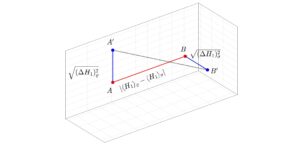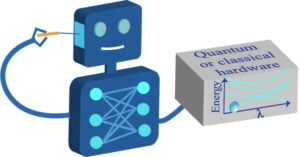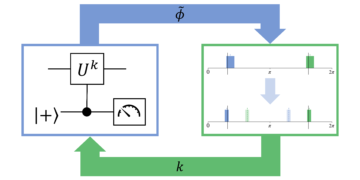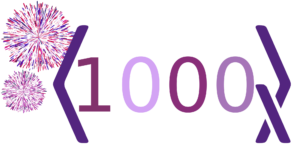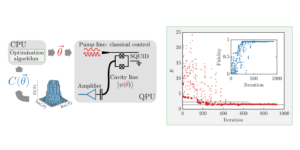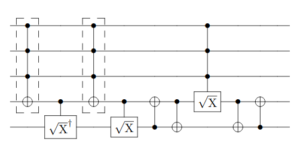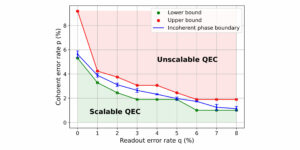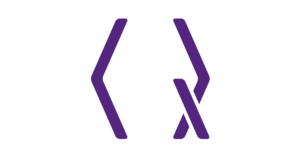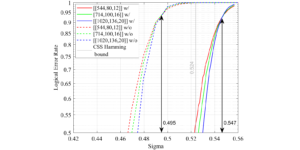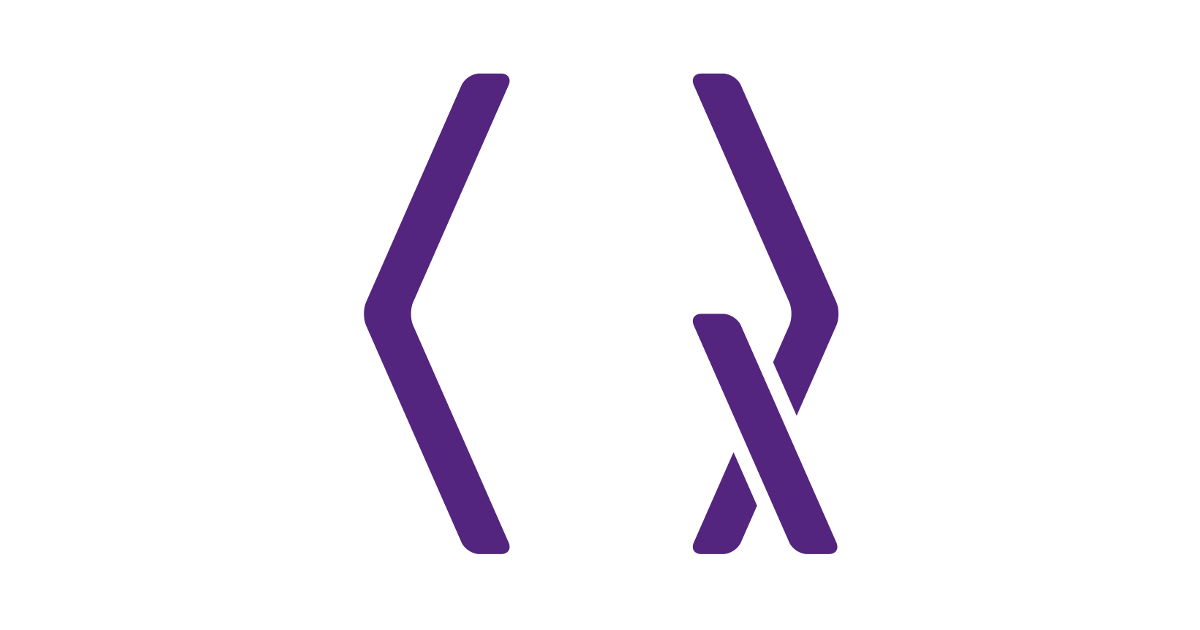
1Kuantum Grubu, Bilgisayar Bilimleri Bölümü, Oxford Üniversitesi
2Fizik Bölümü, Imperial College London
3Kuantum Bilgisi ve Hesaplama için HKU-Oxford Ortak Laboratuvarı
Bu makaleyi ilginç mi buldunuz yoksa tartışmak mı istiyorsunuz? SciRate'e çığlık at veya yorum bırak.
Özet
Kuantum nedensel yapısı üzerine mevcut çalışma, kişinin ilgilenilen sistemler üzerinde keyfi işlemler gerçekleştirebileceğini varsaymaktadır. Ancak bu koşul çoğu zaman karşılanmamaktadır. Burada, kuantum nedensel modellemenin çerçevesini, bir sistemin $textit{sektörel kısıtlamalara}$, yani Hilbert uzayının birbirine eşlenebilecek dik altuzaylarındaki kısıtlamalara maruz kalabileceği durumlara kadar genişletiyoruz. Çerçevemiz (a), nedensel ilişkilerle ilgili bir takım farklı sezgilerin eşdeğer olduğunu kanıtlıyor; (b) sektörel kısıtlamaların varlığında kuantum nedensel yapıların yönlendirilmiş bir grafikle temsil edilebileceğini gösterir; ve (c) bir sistemin bireysel sektörlerinin nedensel ilişkiler taşıdığı nedensel yapının ince taneli halini tanımlar. Örnek olarak, kaba taneli nedensel yapılarının döngüsel olmasına rağmen ince taneli nedensel yapılarının döngüsel olmadığını göstermek için çerçevemizi kuantum anahtarının sözde fotonik uygulamalarına uyguluyoruz. Bu nedenle, bu deneylerin belirsiz nedensel düzeni yalnızca zayıf anlamda gerçekleştirdiği sonucuna varıyoruz. Dikkat çekici bir şekilde, bu, nedensel ilişkinin uzay-zamanda yerelleştirilmesi gerektiği varsayımına dayanmayan, bu etkiyi ortaya koyan ilk argümandır.
Popüler özet
And yet our most successful scientific theory — quantum theory — suggests our most basic ideas about causation and causal reasoning are somehow mistaken. The famous nonlocal correlations that violate Bell's inequalities resist causal explanation as traditionally understood, and the possibility of putting objects into superpositions seems to allow for situations in which there is no definite fact about the direction of causal influence.
As a result, there has been much effort in recent years to modify our causal notions for a quantum setting. Our paper extends the study of intrinsically quantum causal structures to a new range of scenarios. One of the consequences is that recent experiments that aim to create an indefinite direction of causal influence can be understood as "weakly" indefinite — even more strongly indefinite directions of influence are conceivable.
► BibTeX verileri
► Referanslar
[1] L. Hardy, ``Towards quantum gravity: a framework for probabilistic theories with non-fixed causal structure,'' Journal of Physics A: Mathematical and Theoretical 40 no. 12, (2007) 3081, arXiv:gr-qc/0608043.
https://doi.org/10.1088/1751-8113/40/12/S12
arXiv: gr-qc / 0608043
[2] G. Chiribella, G. M. D’Ariano, P. Perinotti, and B. Valiron, ``Quantum computations without definite causal structure,'' Physical Review A 88 no. 2, (Aug, 2013) , arXiv:0912.0195 [quant-ph].
https: / / doi.org/ 10.1103 / physreva.88.022318
arXiv: 0912.0195
[3] O. Oreshkov, F. Costa, and Č. Brukner, ``Quantum correlations with no causal order,'' Nature communications 3 no. 1, (2012) 1–8, arXiv:1105.4464 [quant-ph].
https: / / doi.org/ 10.1038 / ncomms2076
arXiv: 1105.4464
[4] M. Araújo, C. Branciard, F. Costa, A. Feix, C. Giarmatzi, and Č. Brukner, ``Witnessing causal nonseparability,'' New Journal of Physics 17 no. 10, (2015) 102001, arXiv:1506.03776 [quant-ph].
https://doi.org/10.1088/1367-2630/17/10/102001
arXiv: 1506.03776
[5] J. Barrett, R. Lorenz, and O. Oreshkov, ``Quantum causal models,'' (2020) , arXiv:1906.10726 [quant-ph].
arXiv: 1906.10726
[6] N. Paunković and M. Vojinović, ``Causal orders, quantum circuits and spacetime: distinguishing between definite and superposed causal orders,'' Quantum 4 (2020) 275, arXiv:1905.09682 [quant-ph].
https://doi.org/10.22331/q-2020-05-28-275
arXiv: 1905.09682
[7] D. Felce and V. Vedral, ``Quantum refrigeration with indefinite causal order,'' Physical Review Letters 125 (Aug, 2020) 070603, arXiv:2003.00794 [quant-ph].
https: / / doi.org/ 10.1103 / PhysRevLett.125.070603
arXiv: 2003.00794
[8] J. Barrett, R. Lorenz, and O. Oreshkov, ``Cyclic quantum causal models,'' Nature Communications 12 no. 1, (2021) 1–15, arXiv:2002.12157 [quant-ph].
https: / / doi.org/ 10.1038 / s41467-020-20456-x
arXiv: 2002.12157
[9] A. Kissinger and S. Uijlen, ``A categorical semantics for causal structure,'' Logical Methods in Computer Science Volume 15, Issue 3 (2019) , arXiv:1701.04732 [quant-ph].
https://doi.org/10.23638/LMCS-15(3:15)2019
arXiv: 1701.04732
[10] R. Lorenz and J. Barrett, ``Causal and compositional structure of unitary transformations,'' Quantum 5 (2021) 511, arXiv:2001.07774 [quant-ph].
https://doi.org/10.22331/q-2021-07-28-511
arXiv: 2001.07774
[11] C. Branciard, M. Araújo, A. Feix, F. Costa, and Č. Brukner, ``The simplest causal inequalities and their violation,'' New Journal of Physics 18 no. 1, (2015) 013008, arXiv:1508.01704 [quant-ph].
https://doi.org/10.1088/1367-2630/18/1/013008
arXiv: 1508.01704
[12] M. Araújo, F. Costa, and i. c. v. Brukner, ``Computational advantage from quantum-controlled ordering of gates,'' Physical Review Letters 113 (Dec, 2014) 250402, arXiv:1401.8127 [quant-ph].
https: / / doi.org/ 10.1103 / PhysRevLett.113.250402
arXiv: 1401.8127
[13] D. Felce, N. T. Vidal, V. Vedral, and E. O. Dias, ``Indefinite causal orders from superpositions in time,'' Physical Review A 105 no. 6, (2022) 062216, arXiv:2107.08076 [quant-ph].
https: / / doi.org/ 10.1103 / PhysRevA.105.062216
arXiv: 2107.08076
[14] L. M. Procopio, A. Moqanaki, M. Araújo, F. Costa, I. A. Calafell, E. G. Dowd, D. R. Hamel, L. A. Rozema, Č. Brukner, and P. Walther, ``Experimental superposition of orders of quantum gates,'' Nature communications 6 no. 1, (2015) 1–6, arXiv:1412.4006 [quant-ph].
https: / / doi.org/ 10.1038 / ncomms8913
arXiv: 1412.4006
[15] G. Rubino, L. A. Rozema, A. Feix, M. Araújo, J. M. Zeuner, L. M. Procopio, Č. Brukner, and P. Walther, ``Experimental verification of an indefinite causal order,'' Science advances 3 no. 3, (2017) e1602589, arXiv:1608.01683 [quant-ph].
https: / / doi.org/ 10.1126 / sciadv.1602589
arXiv: 1608.01683
[16] K. Goswami, C. Giarmatzi, M. Kewming, F. Costa, C. Branciard, J. Romero, and A. G. White, ``Indefinite causal order in a quantum switch,'' Physical review letters 121 no. 9, (2018) 090503, arXiv:1803.04302 [quant-ph].
https: / / doi.org/ 10.1103 / physrevlett.121.090503
arXiv: 1803.04302
[17] G. Rubino, L. A. Rozema, F. Massa, M. Araújo, M. Zych, v. Brukner, and P. Walther, ``Experimental entanglement of temporal order,'' Quantum 6 (2022) 621, arXiv:1712.06884 [quant-ph].
https://doi.org/10.22331/q-2022-01-11-621
arXiv: 1712.06884
[18] X. Nie, X. Zhu, C. Xi, X. Long, Z. Lin, Y. Tian, C. Qiu, X. Yang, Y. Dong, J. Li, T. Xin, and D. Lu, ``Experimental realization of a quantum refrigerator driven by indefinite causal orders,'' Physical Review Letters 129 no. 10, (2022) 100603, arXiv:2011.12580 [quant-ph].
https: / / doi.org/ 10.1103 / PhysRevLett.129.100603
arXiv: 2011.12580
[19] H. Cao, N.-n. Wang, Z.-A. Jia, C. Zhang, Y. Guo, B.-H. Liu, Y.-F. Huang, C.-F. Li, and G.-C. Guo, ``Experimental demonstration of indefinite causal order induced quantum heat extraction,'' (2021) , arXiv:2101.07979 [quant-ph].
arXiv: 2101.07979
[20] K. Goswami and J. Romero, ``Experiments on quantum causality,'' AVS Quantum Science 2 no. 3, (Oct, 2020) 037101, arXiv:2009.00515 [quant-ph].
https: / / doi.org/ 10.1116 / 5.0010747
arXiv: 2009.00515
[21] L. Hardy, ``Quantum gravity computers: On the theory of computation with indefinite causal structure,'' Quantum Reality, Relativistic Causality, and Closing the Epistemic Circle (2009) 379–401, arXiv:quant-ph/0701019.
https://doi.org/10.1007/978-1-4020-9107-0_21
arXiv: kuant-ph / 0701019
[22] G. Chiribella, G. M. D’Ariano, and P. Perinotti, ``Theoretical framework for quantum networks,'' Physical Review A 80 no. 2, (Aug, 2009) , arXiv:0904.4483 [quant-ph].
https: / / doi.org/ 10.1103 / physreva.80.022339
arXiv: 0904.4483
[23] G. Chiribella, G. D’Ariano, P. Perinotti, and B. Valiron, ``Beyond quantum computers,'' (2009) , arXiv:0912.0195v1 [quant-ph].
arXiv: 0912.0195v1
[24] G. Chiribella, ``Perfect discrimination of no-signalling channels via quantum superposition of causal structures,'' Physical Review A 86 no. 4, (Oct, 2012) , arXiv:1109.5154 [quant-ph].
https: / / doi.org/ 10.1103 / physreva.86.040301
arXiv: 1109.5154
[25] T. Colnaghi, G. M. D'Ariano, S. Facchini, and P. Perinotti, ``Quantum computation with programmable connections between gates,'' Physics Letters A 376 no. 45, (Oct, 2012) 2940–2943, arXiv:1109.5987 [quant-ph].
https: / / doi.org/ 10.1016 / j.physleta.2012.08.028
arXiv: 1109.5987
[26] Ä. Baumeler and S. Wolf, ``The space of logically consistent classical processes without causal order,'' New Journal of Physics 18 no. 1, (2016) 013036, arXiv:1507.01714 [quant-ph].
https://doi.org/10.1088/1367-2630/18/1/013036
arXiv: 1507.01714
[27] Ä. Baumeler, A. Feix, and S. Wolf, ``Maximal incompatibility of locally classical behavior and global causal order in multiparty scenarios,'' Physical Review A 90 no. 4, (2014) 042106, arXiv:1403.7333 [quant-ph].
https: / / doi.org/ 10.1103 / PhysRevA.90.042106
arXiv: 1403.7333
[28] M. Araújo, A. Feix, M. Navascués, and Č. Brukner, ``A purification postulate for quantum mechanics with indefinite causal order,'' Quantum 1 (Apr, 2017) 10, arXiv:1611.08535 [quant-ph].
https://doi.org/10.22331/q-2017-04-26-10
arXiv: 1611.08535
[29] A. Vanrietvelde, N. Ormrod, H. Kristjánsson, and J. Barrett, ``Consistent circuits for indefinite causal order,'' (2022) , arXiv:2206.10042 [quant-ph].
arXiv: 2206.10042
[30] H. Reichenbach, Zamanın yönü, cilt. 65. Kaliforniya Üniversitesi Yayınları, 1956.
https: / / doi.org/ 10.2307 / 2216858
[31] C. J. Wood and R. W. Spekkens, ``The lesson of causal discovery algorithms for quantum correlations: causal explanations of bell-inequality violations require fine-tuning,'' New Journal of Physics 17 no. 3, (Mar, 2015) 033002, arXiv:1208.4119 [quant-ph].
https://doi.org/10.1088/1367-2630/17/3/033002
arXiv: 1208.4119
[32] J.-M. A. Allen, J. Barrett, D. C. Horsman, C. M. Lee, and R. W. Spekkens, ``Quantum common causes and quantum causal models,'' Physical Review X 7 no. 3, (Jul, 2017) , arXiv:1609.09487 [quant-ph].
https: / / doi.org/ 10.1103 / physrevx.7.031021
arXiv: 1609.09487
[33] J. Pearl, Nedensellik. Cambridge Üniversitesi Yayınları, 2009.
https: / / doi.org/ 10.1017 / CBO9780511803161
[34] J. Pienaar and Č. Brukner, ``A graph-separation theorem for quantum causal models,'' New Journal of Physics 17 no. 7, (2015) 073020, arXiv:1406.0430v3 [quant-ph].
https://doi.org/10.1088/1367-2630/17/7/073020
arXiv: 1406.0430v3
[35] F. Costa and S. Shrapnel, ``Quantum causal modelling,'' New Journal of Physics 18 no. 6, (June, 2016) 063032, arXiv:1512.07106 [quant-ph].
https://doi.org/10.1088/1367-2630/18/6/063032
arXiv: 1512.07106
[36] J. Pienaar, ``A time-reversible quantum causal model,'' (2019) , arXiv:1902.00129 [quant-ph].
arXiv: 1902.00129
[37] J. Pienaar, ``Quantum causal models via quantum bayesianism,'' Physical Review A 101 no. 1, (2020) 012104, arXiv:1806.00895 [quant-ph].
https: / / doi.org/ 10.1103 / PhysRevA.101.012104
arXiv: 1806.00895
[38] S. Gogioso and N. Pinzani, ``The topology and geometry of causality,'' (2022) . https://arxiv.org/abs/2206.08911.
https:///doi.org/10.48550/ARXIV.2206.08911
arXiv: 2206.08911
[39] G. Chiribella and H. Kristjánsson, ``Quantum shannon theory with superpositions of trajectories,'' Proceedings of the Royal Society A: Mathematical, Physical and Engineering Sciences 475 no. 2225, (May, 2019) 20180903, arXiv:1812.05292 [quant-ph].
https: / / doi.org/ 10.1098 / rspa.2018.0903
arXiv: 1812.05292
[40] Y. Aharonov and D. Bohm, ``Significance of electromagnetic potentials in the quantum theory,'' Physical Review 115 (Aug, 1959) 485–491.
https: / / doi.org/ 10.1103 / PhysRev.115.485
[41] N. Erez, ``AB effect and aharonov–susskind charge non-superselection,'' Journal of Physics A: Mathematical and Theoretical 43 no. 35, (Aug, 2010) 354030, arXiv:1003.1044 [quant-ph].
https://doi.org/10.1088/1751-8113/43/35/354030
arXiv: 1003.1044
[42] F. D. Santo and B. Dakić, ``Two-way communication with a single quantum particle,'' Physical Review Letters 120 no. 6, (Feb, 2018) , arXiv:1706.08144 [quant-ph].
https: / / doi.org/ 10.1103 / physrevlett.120.060503
arXiv: 1706.08144
[43] L.-Y. Hsu, C.-Y. Lai, Y.-C. Chang, C.-M. Wu, and R.-K. Lee, ``Carrying an arbitrarily large amount of information using a single quantum particle,'' Physical Review A 102 (Aug, 2020) 022620, arXiv:2002.10374 [quant-ph].
https: / / doi.org/ 10.1103 / PhysRevA.102.022620
arXiv: 2002.10374
[44] F. Massa, A. Moqanaki, Ämin Baumeler, F. D. Santo, J. A. Kettlewell, B. Dakić , and P. Walther, ``Experimental two-way communication with one photon,'' Advanced Quantum Technologies 2 no. 11, (Sep, 2019) 1900050, arXiv:1802.05102 [quant-ph].
https: / / doi.org/ 10.1002 / qute.201900050
arXiv: 1802.05102
[45] R. Faleiro, N. Paunkovic, and M. Vojinovic, ``Operational interpretation of the vacuum and process matrices for identical particles,'' Quantum 7 (2023) 986, arXiv:2010.16042 [quant-ph].
https://doi.org/10.22331/q-2023-04-20-986
arXiv: 2010.16042
[46] I. Marvian and R. W. Spekkens, ``A generalization of Schur–Weyl duality with applications in quantum estimation,'' Communications in Mathematical Physics 331 no. 2, (2014) 431–475, arXiv:1112.0638 [quant-ph].
https://doi.org/10.1007/s00220-014-2059-0
arXiv: 1112.0638
[47] AW Harrow, Tutarlı klasik iletişimin uygulamaları ve Schur dönüşümü kuantum bilgi teorisine. Doktora tezi, Massachusetts Teknoloji Enstitüsü, 2005. arXiv:quant-ph/0512255.
arXiv: kuant-ph / 0512255
[48] G. M. Palma, K.-A. Suominen, and A. K. Ekert, ``Quantum computers and dissipation,'' Proceedings of the Royal Society A 452 (1996) 567–584, arXiv:quant-ph/9702001.
https: / / doi.org/ 10.1098 / rspa.1996.0029
arXiv: kuant-ph / 9702001
[49] L.-M. Duan and G.-C. Guo, ``Preserving coherence in quantum computation by pairing the quantum bits,'' Physical Review Letters 79 (1997) 1953–1956, arXiv:quant-ph/9703040.
https: / / doi.org/ 10.1103 / PhysRevLett.79.1953
arXiv: kuant-ph / 9703040
[50] P. Zanardi and M. Rasetti, ``Noiseless quantum codes,'' Physical Review Letters 79 no. 17, (1997) 3306, arXiv:quant-ph/9705044.
https: / / doi.org/ 10.1103 / PhysRevLett.79.3306
arXiv: kuant-ph / 9705044
[51] D. A. Lidar, I. L. Chuang, and K. B. Whaley, ``Decoherence-free subspaces for quantum computation,'' Physical Review Letters 81 no. 12, (1998) 2594, arXiv:quant-ph/9807004.
https: / / doi.org/ 10.1103 / PhysRevLett.81.2594
arXiv: kuant-ph / 9807004
[52] A. Beige, D. Braun, B. Tregenna, and P. L. Knight, ``Quantum computing using dissipation to remain in a decoherence-free subspace,'' Physical Review Letters 85 no. 8, (2000) 1762.
https: / / doi.org/ 10.1103 / PhysRevLett.85.1762
[53] P. G. Kwiat, A. J. Berglund, J. B. Altepeter, and A. G. White, ``Experimental verification of decoherence-free subspaces,'' Science 290 no. 5491, (2000) 498–501.
https: / / doi.org/ 10.1126 / science.290.5491.498
[54] O. Oreshkov, ``Time-delocalized quantum subsystems and operations: on the existence of processes with indefinite causal structure in quantum mechanics,'' Quantum 3 (2019) 206, arXiv:1801.07594 [quant-ph].
https://doi.org/10.22331/q-2019-12-02-206
arXiv: 1801.07594
[55] A. Vanrietvelde, H. Kristjánsson, and J. Barrett, ``Routed quantum circuits,'' Quantum 5 (Jul, 2021) 503, arXiv:2011.08120 [quant-ph].
https://doi.org/10.22331/q-2021-07-13-503
arXiv: 2011.08120
[56] A. Vanrietvelde and G. Chiribella, ``Universal control of quantum processes using sector-preserving channels,'' Quantum Information and Computation 21 no. 15-16, (Dec, 2021) 1320–1352, arXiv:2106.12463 [quant-ph].
https: / / doi.org/ 10.26421 / QIC21.15-16-5
arXiv: 2106.12463
[57] M. Wilson and A. Vanrietvelde, ``Composable constraints,'' (2021) , arXiv:2112.06818 [math.CT].
arXiv: 2112.06818
[58] A. A. Abbott, J. Wechs, D. Horsman, M. Mhalla, and C. Branciard, ``Communication through coherent control of quantum channels,'' Quantum 4 (Sep, 2020) 333, arXiv:1810.09826 [quant-ph].
https://doi.org/10.22331/q-2020-09-24-333
arXiv: 1810.09826
[59] H. Kristjánsson, G. Chiribella, S. Salek, D. Ebler, and M. Wilson, ``Resource theories of communication,'' New Journal of Physics 22 no. 7, (Jul, 2020) 073014, arXiv:1910.08197 [quant-ph].
https://doi.org/10.1088/1367-2630/ab8ef7
arXiv: 1910.08197
[60] I. Friend, ``Private communication,'' (2022).
[61] G. Chiribella, G. M. D’Ariano, and P. Perinotti, ``Transforming quantum operations: Quantum supermaps,'' EPL (Europhysics Letters) 83 no. 3, (Jul, 2008) 30004, arXiv:0804.0180 [quant-ph].
https://doi.org/10.1209/0295-5075/83/30004
arXiv: 0804.0180
[62] M. Zych, F. Costa, I. Pikovski, and Č. Brukner, ``Bell’s theorem for temporal order,'' Nature communications 10 no. 1, (2019) 1–10, arXiv:1708.00248 [quant-ph].
https: / / doi.org/ 10.1038 / s41467-019-11579-x
arXiv: 1708.00248
[63] N. S. Móller, B. Sahdo, and N. Yokomizo, ``Quantum switch in the gravity of Earth,'' Physical Review A 104 no. 4, (2021) 042414, arXiv:2012.03989 [quant-ph].
https: / / doi.org/ 10.1103 / PhysRevA.104.042414
arXiv: 2012.03989
[64] J. Wechs, C. Branciard, and O. Oreshkov, ``Existence of processes violating causal inequalities on time-delocalised subsystems,'' Nature Communications 14 no. 1, (2023) 1471, arXiv:2201.11832 [quant-ph].
https://doi.org/10.1038/s41467-023-36893-3
arXiv: 2201.11832
[65] V. Vilasini, ``An introduction to causality in quantum theory (and beyond) (master's thesis),'' (2017) . https://foundations.ethz.ch/wp-content/uploads/2019/07/vilasini_master_thesis-v2.pdf.
https:///foundations.ethz.ch/wp-content/uploads/2019/07/vilasini_master_thesis-v2.pdf
[66] V. Vilasini, ``Causality in definite and indefinite space-times (extended abstract for qpl 2020),'' (2020) . https://wdi.centralesupelec.fr/users/valiron/qplmfps/papers/qs01t3.pdf.
https:///wdi.centralesupelec.fr/users/valiron/qplmfps/papers/qs01t3.pdf
[67] C. Portmann, C. Matt, U. Maurer, R. Renner, and B. Tackmann, ``Causal boxes: quantum information-processing systems closed under composition,'' IEEE Transactions on Information Theory 63 no. 5, (2017) 3277–3305. https://doi.org/10.1109/TIT.2017.2676805.
https: / / doi.org/ 10.1109 / TIT.2017.2676805
[68] B. d'Espagnat, ``An elementary note about `mixtures','' Preludes in Theoretical Physics in honor of VF Weisskopf (1966) 185.
[69] B. d'Espagnat, Kuantum mekaniğinin kavramsal temelleri. CRC Basını, 2018.
https: / / doi.org/ 10.1201 / 9780429501449
[70] S. D. Bartlett, T. Rudolph, and R. W. Spekkens, ``Reference frames, superselection rules, and quantum information,'' Review of Modern Physics 79 (Apr, 2007) 555–609, arXiv:quant-ph/0610030.
https: / / doi.org/ 10.1103 / RevModPhys.79.555
arXiv: kuant-ph / 0610030
[71] V. Vilasini and R. Renner, ``Embedding cyclic causal structures in acyclic spacetimes: no-go results for process matrices,'' (2022) , arXiv:2203.11245 [quant-ph].
arXiv: 2203.11245
[72] B. Schumacher and M. D. Westmoreland, ``Locality and information transfer in quantum operations,'' Quantum Information Processing 4 no. 1, (2005) 13–34, arXiv:quant-ph/0406223.
HTTPS: / / doi.org/ 10.1007 / s11128-004-3193-il
arXiv: kuant-ph / 0406223
Alıntılama
[1] Nikola Paunković and Marko Vojinović, "Equivalence Principle in Classical and Quantum Gravity", Evren 8 11, 598 (2022).
[2] Julian Wechs, Cyril Branciard, and Ognyan Oreshkov, "Existence of processes violating causal inequalities on time-delocalised subsystems", Doğa İletişimi 14, 1471 (2023).
[3] Huan Cao, Jessica Bavaresco, Ning-Ning Wang, Lee A. Rozema, Chao Zhang, Yun-Feng Huang, Bi-Heng Liu, Chuan-Feng Li, Guang-Can Guo, and Philip Walther, "Semi-device-independent certification of indefinite causal order in a photonic quantum switch", Optik 10 5, 561 (2023).
[4] Augustin Vanrietvelde, Nick Ormrod, Hlér Kristjánsson, and Jonathan Barrett, "Consistent circuits for indefinite causal order", arXiv: 2206.10042, (2022).
[5] Pedro R. Dieguez, Vinicius F. Lisboa, and Roberto M. Serra, "Thermal devices powered by generalized measurements with indefinite causal order", Fiziksel İnceleme A 107 1, 012423 (2023).
[6] Matt Wilson, Giulio Chiribella, and Aleks Kissinger, "Quantum Supermaps are Characterized by Locality", arXiv: 2205.09844, (2022).
[7] Marco Fellous-Asiani, Raphaël Mothe, Léa Bresque, Hippolyte Dourdent, Patrice A. Camati, Alastair A. Abbott, Alexia Auffèves, and Cyril Branciard, "Comparing the quantum switch and its simulations with energetically constrained operations", Fiziksel İnceleme Araştırması 5 2, 023111 (2023).
[8] Nick Ormrod, V. Vilasini, and Jonathan Barrett, "Which theories have a measurement problem?", arXiv: 2303.03353, (2023).
[9] Tein van der Lugt, Jonathan Barrett, and Giulio Chiribella, "Device-independent certification of indefinite causal order in the quantum switch", arXiv: 2208.00719, (2022).
[10] Robin Lorenz ve Sean Tull, "Sicim diyagramlarında nedensel modeller", arXiv: 2304.07638, (2023).
[11] Michael Antesberger, Marco Túlio Quintino, Philip Walther, and Lee A. Rozema, "Higher-order Process Matrix Tomography of a passively-stable Quantum SWITCH", arXiv: 2305.19386, (2023).
[12] Martin Sandfuchs, Marcus Haberland, V. Vilasini, and Ramona Wolf, "Security of differential phase shift QKD from relativistic principles", arXiv: 2301.11340, (2023).
[13] Ricardo Faleiro, Nikola Paunkovic, and Marko Vojinovic, "Operational interpretation of the vacuum and process matrices for identical particles", arXiv: 2010.16042, (2020).
[14] Eleftherios-Ermis Tselentis and Ämin Baumeler, "Admissible Causal Structures and Correlations", arXiv: 2210.12796, (2022).
[15] Ricardo Faleiro, Nikola Paunkovic, and Marko Vojinovic, "Operational interpretation of the vacuum and process matrices for identical particles", Kuantum 7, 986 (2023).
Yukarıdaki alıntılar SAO / NASA REKLAMLARI (son başarıyla 2023-06-03 12:58:29) güncellendi. Tüm yayıncılar uygun ve eksiksiz alıntı verisi sağlamadığından liste eksik olabilir.
On Crossref'in alıntı hizmeti alıntı yapma çalışmaları ile ilgili veri bulunamadı (son deneme 2023-06-03 12:58:28).
Bu Makale, Quantum'da Creative Commons Atıf 4.0 Uluslararası (CC BY 4.0) lisans. Telif hakkı, yazarlar veya kurumları gibi orijinal telif hakkı sahiplerine aittir.
- SEO Destekli İçerik ve Halkla İlişkiler Dağıtımı. Bugün Gücünüzü Artırın.
- PlatoAiStream. Web3 Veri Zekası. Bilgi Genişletildi. Buradan Erişin.
- Adryenn Ashley ile Geleceği Basmak. Buradan Erişin.
- PREIPO® ile PRE-IPO Şirketlerinde Hisse Al ve Sat. Buradan Erişin.
- Kaynak: https://quantum-journal.org/papers/q-2023-06-01-1028/
- :vardır
- :dır-dir
- :olumsuzluk
- :Neresi
- ][P
- 1
- 10
- 102
- 107
- 11
- 12
- 13
- 14
- %15
- 17
- 1996
- 1998
- 20
- 2001
- 2005
- 2008
- 2011
- 2012
- 2013
- 2014
- 2015
- 2016
- 2017
- 2018
- 2019
- 2020
- 2021
- 2022
- 2023
- 22
- 23
- 24
- 26
- 27
- 28
- 30
- 31
- 39
- 40
- 49
- 50
- 60
- 66
- 67
- 7
- 70
- 72
- 8
- 80
- 9
- a
- Hakkımızda
- yukarıdaki
- ÖZET
- erişim
- asiklik
- ileri
- gelişmeler
- avantaj
- bağlantıları
- amaç
- algoritmalar
- Türkiye
- izin vermek
- miktar
- an
- ve
- Başka
- Uygulama
- uygulamaları
- Tamam
- Nisan
- ARE
- tartışma
- AS
- varsayımı
- Ağustos
- yazar
- Yazarlar
- temel
- BE
- Ayı
- Çünkü
- olmuştur
- Inanmak
- Çan
- arasında
- Ötesinde
- kutular
- mola
- fakat
- by
- Kaliforniya
- Cambridge
- CAN
- Kanser
- taşıma
- Sebeb olmak
- nedenleri
- belgeleme
- chang
- kanallar
- özelliği
- ücret
- Daire
- kapalı
- kapanış
- kodları
- tutarlı
- Kolej
- yorum Yap
- ortak
- çoğunlukla
- Avam
- Yakın İletişim
- İletişim
- karşılaştırarak
- tamamlamak
- hesaplama
- hesaplamalar
- bilgisayar
- Bilgisayar Bilimleri
- bilgisayarlar
- bilgisayar
- kavramlar
- kavramsal
- sonucuna
- koşul
- Bağlantılar
- Sonuçları
- tutarlı
- kısıtlamaları
- kontrol
- telif hakkı
- CRC
- yaratmak
- veri
- tanımlar
- O
- bölüm
- Cihaz
- diyagramlar
- farklı
- yön
- yol tarifi
- keşif
- ayırt etme
- tartışmak
- tahrik
- e
- toprak
- Efekt
- etkileri
- çaba
- teşvik etmek
- Mühendislik
- Eşdeğer
- Eter (ETH)
- Hatta
- her gün
- örnek
- deneyler
- Açıklamak
- açıklama
- uzatmak
- uzanır
- çıkarma
- gerçek
- ünlü
- Şubat ayında
- Ad
- İçin
- bulundu
- Temeller
- iskelet
- arkadaş
- itibaren
- Gates,
- geometri
- Küresel
- grafik
- yerçekimi
- grup
- Harvard
- Var
- okuyun
- sahipleri
- HTTPS
- huang
- i
- fikirler
- özdeş
- IEEE
- imparatorluk
- Imperial College
- in
- bireysel
- eşitsizlikler
- etkilemek
- bilgi
- Enstitü
- kurumları
- faiz
- ilginç
- Uluslararası
- yorumlama
- içine
- doğal olarak
- Giriş
- konu
- IT
- ONUN
- JavaScript
- ortak
- dergi
- Haziran
- Şövalye
- laboratuvar
- büyük
- Soyad
- Ayrılmak
- Rüzgâraltı
- ders
- li
- Lisans
- lidar
- hayat
- lin
- Liste
- lokal olarak
- mantıksal
- Uzun
- çok
- Marco
- Marcus
- kırlangıç
- massachusetts
- Massachusetts Teknoloji Enstitüsü
- usta
- matematik
- matematiksel
- Matris
- Mayıs..
- ölçüm
- ölçümler
- mekanik
- yöntemleri
- Michael
- model
- modelleme
- modelleri
- Modern
- değiştirmek
- Ay
- Daha
- çoğu
- çok
- şart
- Tabiat
- ağlar
- yeni
- yok hayır
- özellikle
- numara
- nesneler
- Ekim
- of
- sık sık
- on
- ONE
- bir tek
- açık
- işletme
- Operasyon
- or
- sipariş
- emir
- orijinal
- bizim
- dışarı
- eşleştirme
- kâğıt
- parçacık
- İnsanlar
- yapmak
- faz
- fiziksel
- Fizik
- Platon
- Plato Veri Zekası
- PlatoVeri
- olasılık
- powered
- varlık
- basın
- prensip
- ilkeler
- Sorun
- kovuşturma
- süreç
- Süreçler
- işleme
- kanıtlıyor
- sağlamak
- yayınlanan
- yayımcı
- Yayıncılar
- koymak
- Kuantum
- kuantum bilgisayarlar
- kuantum bilgisi
- Kuantum Mekaniği
- kuantum ağları
- kuantum süperpozisyonu
- YAĞMUR
- menzil
- Gerçeklik
- gerçekleşme
- gerçekleştirmek
- son
- referanslar
- ilişkiler
- kalmak
- kalıntılar
- temsil
- gerektirir
- araştırma
- kısıtlamaları
- sonuç
- Sonuçlar
- yorum
- narbülbülü
- kraliyet
- kurallar
- s
- aynı
- senaryolar
- Bilim
- BİLİMLERİ
- Sean
- Sektörler
- güvenlik
- görmek
- görünüyor
- semantik
- duyu
- ayar
- çalışma
- şov
- Gösteriler
- tek
- durumlar
- Sigara içmek
- Toplum
- uzay
- sokak
- dizi
- şiddetle
- yapı
- Ders çalışma
- başarılı
- Başarılı olarak
- böyle
- Önerdi
- uygun
- üstüne koyma
- anahtar
- sistem
- Sistemler
- Teknolojileri
- Teknoloji
- o
- The
- ve bazı Asya
- teorik
- teori
- Orada.
- bu nedenle
- termal
- Bunlar
- tez
- onlar
- işler
- Re-Tweet
- İçinden
- zaman
- Başlık
- için
- geleneksel
- işlemler
- transfer
- Dönüştürmek
- dönüşümler
- DÖNÜŞ
- altında
- anladım
- üniversite
- güncellenmiş
- URL
- kullanma
- Vakum
- Doğrulama
- çok
- üzerinden
- ihlal
- İHLAL
- İhlaller
- hacim
- W
- istemek
- oldu
- we
- ne zaman
- hangi
- süre
- beyaz
- Wilson
- ile
- olmadan
- Kurt
- ahşap
- İş
- çalışır
- wu
- X
- xi
- yıl
- yıl
- henüz
- zefirnet

